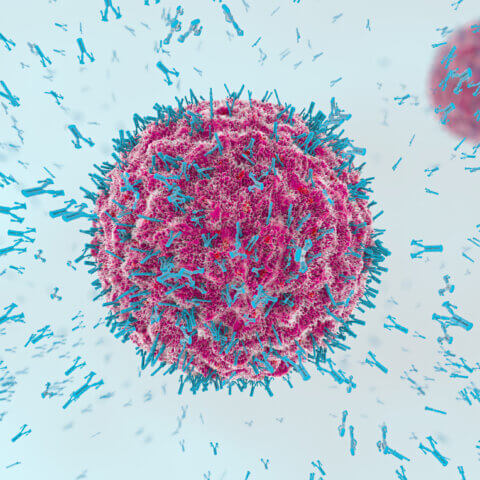Last Updated: November 28, 2023, 1 pm UTC
Prostate cancer (PC) is one of the most commonly diagnosed cancers overall and the most frequently diagnosed cancer in men. The 2018 global estimate of new PC cases exceeded 1.2 million, and more than 350,000 men died from the disease worldwide.1 Over the last decade the emergence of new treatments, combined with better use of existing therapies in early-stage disease, have transformed the PC therapeutic landscape, and new imaging and sequencing technologies have helped to improve screening and detection rates. Nevertheless, many patients present with intermediate or high-risk localized, locally advanced, or metastatic PC and, despite treatment, succumb to the disease.2 At diagnosis, 77 percent of PC cases are localized, while in 13 percent the cancer has spread to regional lymph nodes, and six percent have distant metastases. Whereas the five-year relative survival rate for localized and regional PC is 100 percent, it is only 30.6 percent for men with metastatic PC (mPC).3
Despite the fact that no curative treatment exists for mPC, the past several years have seen a steady increase in the number of active trials of therapies for metastatic castration-resistant PC (mCRPC), particularly in the United States. That has led to increased competition for patients and slower recruitment in mCRPC treatment trials.
Enrollment difficulties plague a phase 2 study
A U.S.-based developer of an investigative therapy for mCRPC engaged Premier Research to increase enrollment in a Phase 2 mCRPC study involving 100 patients at six sites in the United States. Before finalizing the protocol, a new arm was added to the study where participants would receive a recently approved PARP inhibitor that had become the new standard of care (SOC) and was a direct competitor to the sponsor’s product. This change was made without consulting Premier, study investigators, or any key opinion leaders (KOLs); nor was a formal competitive analysis during feasibility assessment.
Almost immediately, the study was plagued by enrollment difficulties, especially in the new SOC arm, as patients had little incentive to enroll in the new arm now that this product was available outside of the construct of a clinical trial. Moreover, several other studies were competing for the same patient population, with some sites conducting as many as six or seven mCRPC studies concurrently. Additionally, the final protocol contained amended eligibility criteria from the initial draft reviewed by the sites; these changes limited the patient population so narrowly that it excluded many patients who might have been a good fit for the study. Also, in the study’s combination therapy arm, the medication administered concomitantly with the sponsor’s drug appeared to cause hypokalemia in several subjects, resulting in a higher than expected patient dropout rate.
Implementing a solution
Premier suggested expanding the study to Europe, where the mCRPC clinical trial landscape was less competitive. Premier also recommended a new feasibility questionnaire and sought KOL input on a proposed protocol amendment to make the study more inclusive, thereby boosting enrollment.
Premier instituted a series of calls at the site level to allow our clinical research associates (CRAs) to engage more directly with study personnel. These calls were supplemented by bi-weekly calls with the study’s principal investigators (PIs) to discuss enrollment issues and overall site performance. The PI calls also gave Premier the opportunity to present efficacy data on the sponsor’s drug, information that made the PIs more enthusiastic about enrolling patients into this trial instead of other active studies at their sites.
One outcome of these calls was the addition of a urologist as a sub-investigator at each site. This was based on the recognition that many patients, particularly in rural areas, preferred to receive care from their urologist rather than travel to a major cancer center. This change empowered the urologists to refer patients to the trial.
Premier launched a detailed feasibility assessment to facilitate increased enrollment, which included a brief PI survey to gather intelligence on enrollment challenges. The survey findings allowed Premier to develop recruitment, screening, and enrollment plans in partnership with each site. Premier also expanded this feasibility assessment to an additional site in Europe and closed inactive sites in the United States.
As a result of our efforts, enrollment in the Phase 2 mCRPC trial was put on track to meet study milestones due to increased site engagement, expansion of the study to different regions, and a site-tailored protocol amendment designed to facilitate enrollment.
Lessons learned
This study provided some important lessons in stimulating oncology clinical trial enrollment. One is the importance of KOL review before finalizing the protocol design. Secondly, it is crucial to complete the feasibility questionnaire based on the final protocol, rather than a draft protocol synopsis. Another key lesson was that limited site outreach during the planning stages nearly doomed the study With qualified back-up sites and formal, site-specific screening and enrollment plans in place at study launch, initial enrollment would have gone more smoothly.
Looking more closely at mCRPC, this study also demonstrated the importance of assessing the indication-specific clinical trial landscape. In addition, study planning must include thorough competitive analysis of other trials involving the target population in the planned regions. Finally, continued monitoring of competing trials might have prevented some of the enrollment difficulties from the beginning. Fortunately, our recommendations were implemented to amend the protocol and broaden the eligibility criteria, putting this study back on track and strengthening our partnership. Premier Research has completed more than 170 hematology and oncology clinical trials through every phase over the past five years, with more than 40 percent involving an immunotherapy component. To learn more about our oncology expertise, click here.
[1] Bray F, Ferlay J, Soerjomataram I, Siegel RL, Torre LA, Jemal A. Global cancer statistics 2018: GLOBOCAN estimates of incidence and mortality worldwide for 36 cancers in 185 countries. CA Cancer J Clin. 2018;68(6):394-424.
[2] Teo MY, Rathkopf DE, Kantoff P. Treatment of advanced prostate cancer. Annu Rev Med. 2019;70:479-499.
[3] Cancer Stat Facts: prostate cancer. National Cancer Institute; 2022. https://seer.cancer.gov/statfacts/html/prost.html. Accessed February 18, 2022.

 Webinar
Webinar 

 Perspectives Blog
Perspectives Blog 